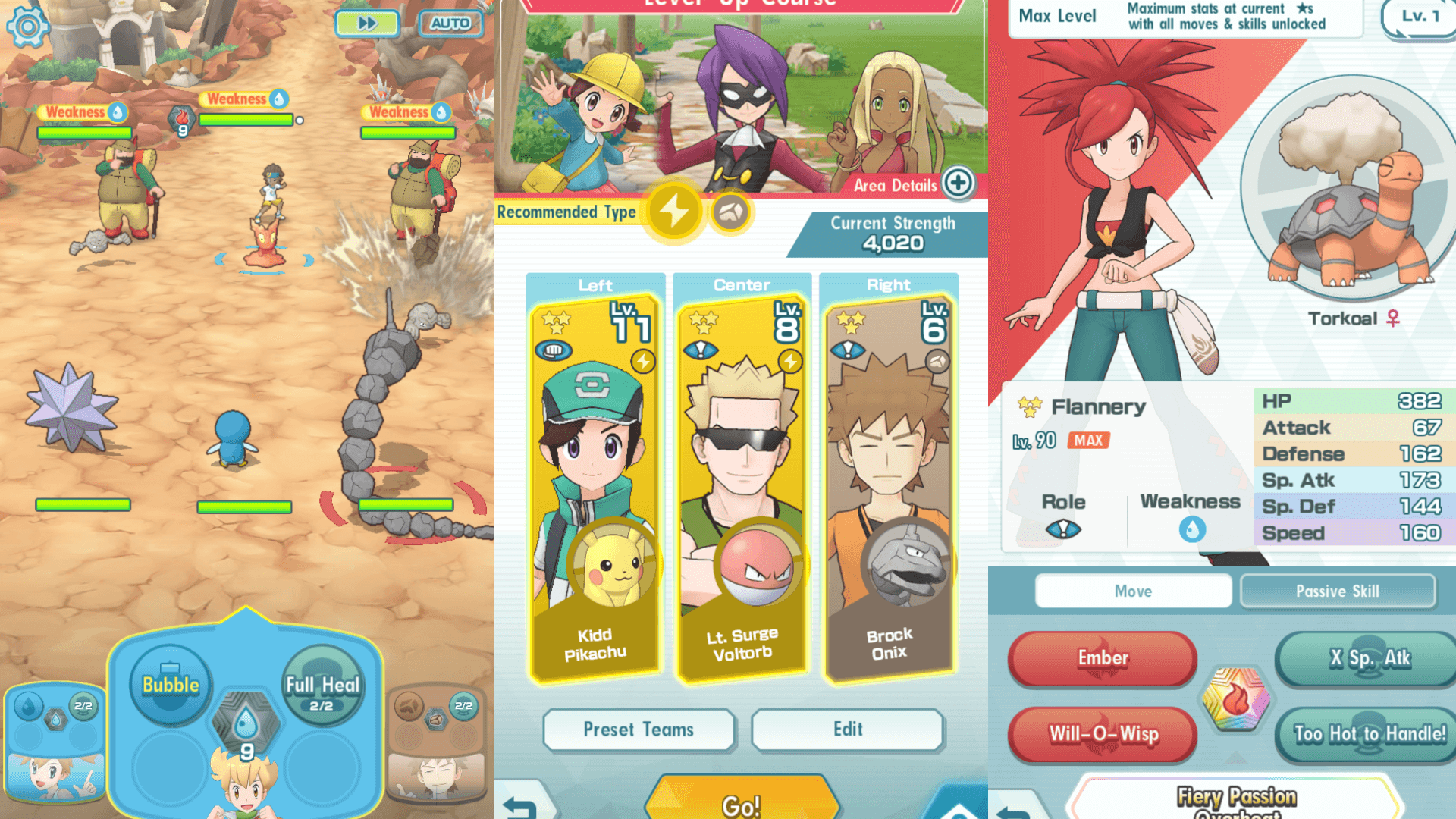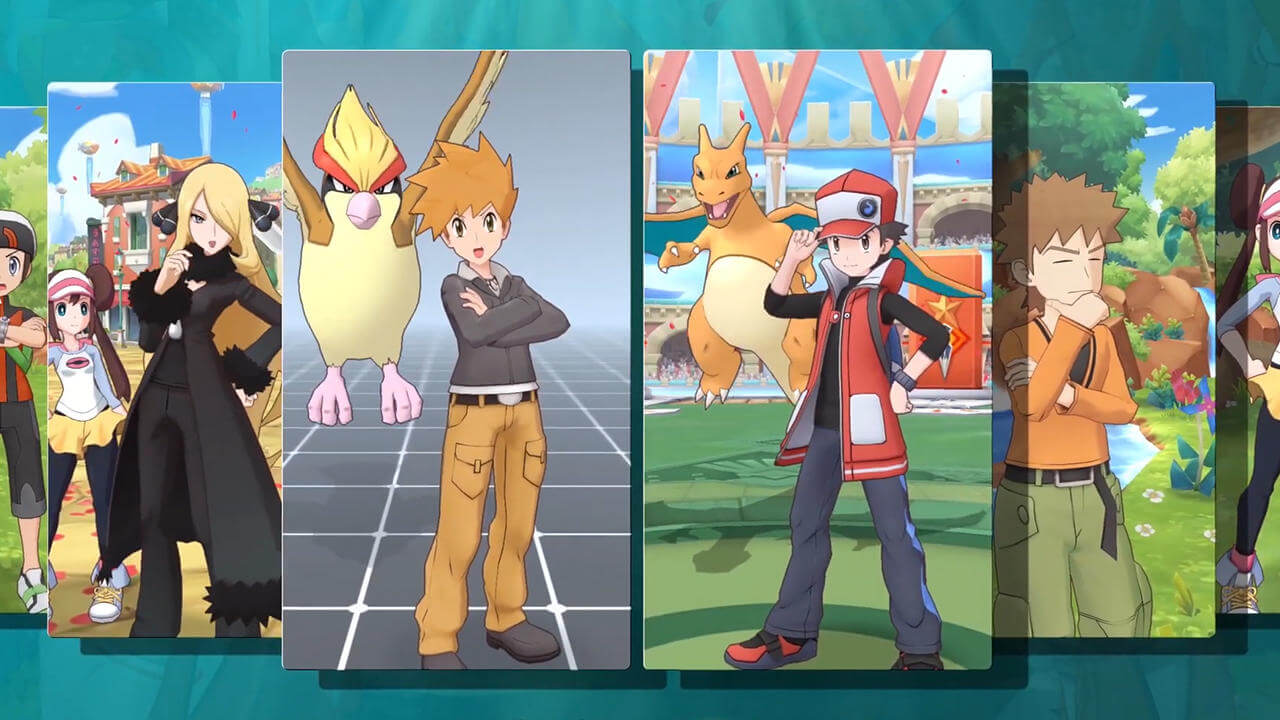Pokémon Masters is officially out and in our hands as of August 29th, and despite some expected server issues, it’s definitely delivering as planned. Some folks may be unaware, but the game has actually been in limited access in Canada and Singapore for a little while now, and being a nerd with access to the Canadian Google Play store, I was fortunate enough to be able to get my hands on the full release of the game a little early. I’ve spent right around 10 hours exploring the island of Pasio at this point, and I can confidently say that I… have some notes? Surprisingly good ones, actually. So pull up a beanbag chair and bust out the Capri Sun because I’ve got games on my phone and we’re gonna chat about ’em.
Definitely note that this is by no means a full review, as I haven’t yet completed the game’s story; instead, we’re just going to talk about what I’ve played so far and the potential I think the game has.
So What Actually Is Pokémon Masters?
Nintendo was kind enough to share a pretty sweet trailer and a good amount of information with us way back in June on Pokémon Masters, at least more than the original announcement tweet was willing to tell us. One thing that wasn’t super evident in this info dump, however, was what exactly the gameplay would consist of. We saw plenty of in-game footage regarding battles and talking with Trainers, but how would we explore the island of Pasio? Could we capture new Pokémon? Could we evolve them? What kind of game was being handed to us, exactly?
As it turned out, the answer was “a very nice looking gatcha game.” Interactions with Trainers and the environment, outside of battles, go down sort of like a visual novel. If you’ve ever played Love Live! School Idol Festival (anyone? Just me? Alright.), then you kind of know what you’re in for: a series of “missions” that alternate between model-animated story beats and battles. These are grouped into different chapters that each contain their own story arcs, which we’ll talk about later. You collect teams consisting of one Trainer and their partner Pokémon, known as a sync pair, who team up with two other sync pairs to form a sync team.
Battles are definitely where the game shines, though, so let’s talk about those.
Battles are Fast-Paced and Pretty Tough
Pokémon Masters has a bit of a different battle schtick than mainstream Pokémon games. Instead of the classic turn-based, 6-Pokémon battles the series is known for, Pokémon Masters uses a 3-on-3 real-time simultaneous battle system. Both teams of three act using an action gauge at the bottom of the screen, which slowly fills up during the battle. Attacking moves then require the player to have the gauge filled to a certain point, allowing players to rapidly attack foes with smaller, fast attacks, or save up energy to use big, powerful moves. Each Sync Pair also has access to a unique sync move, a huge attack that can be used after a certain amount of actions have been done by your team. Sync moves will also buff your team and debuff your opponent after use, so they can really help turn the tide of a battle in a pinch.

Battles seem pretty straight-forward on the surface, but I was actually surprised by how quickly the game was legitimately challenging me. There was a very clear section in the first chapter where the game was definitely holding my hand, making sure I learned the ins-and-outs of battles, but once I hit Flannery I actually was met with a pretty significant skill wall. Timing attacks was crucial, and I found myself having to go do other missions to level up my sync pairs in order to take her down. The skill walls continued to grow larger, forcing me to spend a good amount of time learning the deeper strengths and weaknesses of my sync pairs in order to come out on top.
The Story is Pretty Good and Very Classically Pokémon.
Pokémon Masters features a surprisingly fleshed-out story mode, broken into a bunch of chapters. Your character has traveled to the island of Pasio to take on the Pokémon Master’s League, but so has pretty much everyone else in the world, including the members of the nefarious Team Break. You’re tasked with traveling the island to collect five badges to earn your spot in the PML, while simultaneously stopping Team Break’s scheme to sabotage the PML and steal a few Pokémon while they’re at it. It’s all very reminiscent of a full-fledged Pokémon game, and actually does a very good job of fleshing out its story beats and characters.
There’s a Good Variety of Sync Pairs, But I Want More.
As I mentioned earlier, Pokémon Masters is a gatcha game at heart. You slowly earn gems while you play that can be cashed in at the Pokémon Center to spin the wheel and unlock a new sync pair. You can still get duplicates in this process, but there is a benefit when this happens of the duplicate being absorbed into your (probably stronger) version of the pair, and leveling up the power of its sync move. Gems can, of course, be purchased, but the game definitely does not push this on you, and I have yet to feel obligated to buy anything in the 10 hours I’ve been playing.

At the moment, there are 59 sync pairs up for grabs, as well as one super-powerful “Sygna Suit” variant earned through gameplay. This obviously won’t be the final total, as many sync pairs featured in trailers are still absent from the game, but it gives a good variety to start out with. Sync pairs are assigned star-based rarities referred to in the game as “potential,” which is essentially how you can gauge a pair’s rarity. It’s also a sort of cap on the team’s max level; a sync pair with a 3-star potential will only be able to get to level 90, but a 5-star sync pair can climb all the way to the classic level 100. That being said, the game does give you a way to increase a pair’s potential, so you won’t have to ditch your favorites if you’re willing to put in the work.
It’s Surprisingly Not Pay-To-Win.
Gatcha games are pretty much synonymous with pay-to-win in most cases, but Pokémon Masters breaks this mold pretty well. The game opens up a training area for you pretty early on, where you can grind for items that help you level up, unlock new moves, and even buy new sync pairs. Whenever you complete a mission or area for the first time, the game awards you gems in pretty generous quantities, making your trips to the sync scouter pretty frequent. Training missions are also very generous when giving out team-enhancing items, so if you’re willing to grind, you can max out your entire party’s levels pretty damn fast. Combine this with the fact that Pokémon Masters features a relatively intelligent auto-play system that will be able to defeat areas you’re over-leveled for, and you can actually AFK grind enough to be able to really just spend your time enjoying the game’s story and collecting new sync pairs.

I’m Still Unlocking New Features
The reason I’m not putting this out as a full review is that at 10 hours into this mobile gotcha game, I’m still unlocking new features and discovering new things. Honestly, I’m genuinely shocked at how well-built Pokémon Masters is. If you’re a casual player, you can jump in, do a few battles, and get your fix. If you want more, the game presents progressively more difficult challenges as you go, suiting your higher strength and skill. It’s challenging enough to make you work for those high-level rewards, but forgiving enough to let anyone pick it up, tap a few buttons, and have some fun.
Obviously, the Pokémon franchise has been under fire lately for their handling of Sword and Shield, but this game is a weirdly exciting bit of entertainment to take your mind off of that. It’s also a very, very good example of why Game Freak has every right to be worried that they might be losing control of their most popular game in favor of Pokémon seeing more releases on the mobile front. The game certainly transfers well, especially given the fact that it’s been handheld through the vast majority of its life; but time will tell whether Pokémon Masters will truly be the Pokémon console killer Game Freak expects it to be, or if it’ll surge and die the way Pokémon Go did three years ago.








